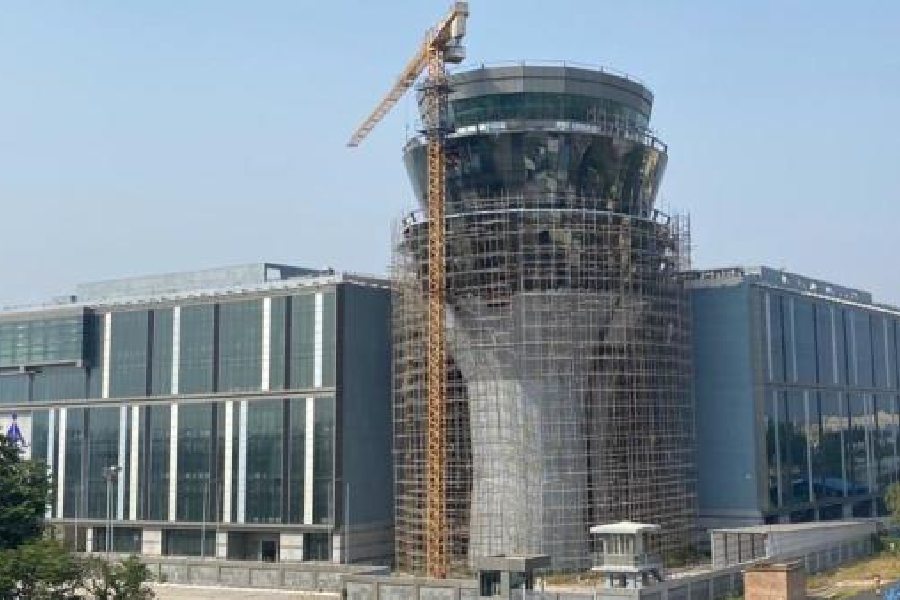The Kolkata airport can handle more flights now, in air and on land, though its current requirement is much less than that.
Since the past week the airport has been operating with an enhanced capacity of the runway and the airspace, said officials.
From January 1, the required lateral separation between two aircraft in India’s air space has come down from 10 nautical miles — or 18.5km — to 5 nautical miles, or 9.26km.
On December 28, four rapid taxiways on the main runway of the Kolkata airport became operational, enhancing the runway’s capacity to handle flights.
From 35 flights an hour, the capacity of the main runway has gone up to 45 flights an hour, said an official.
A senior official at the Kolkata airport said the capacity enhancement has been done looking at the future because the airport currently handles 30 flights an hour during the rush hours.
“The lateral separation of 5 nautical miles within the surveillance coverage in India’s airspace will allow flights landing in Kolkata to hover for a shorter period. During take-off, too, the wait will be shorter because the airspace capacity has increased by 40 per cent,” an official at the Kolkata airport said on Tuesday.
According to the Airports Authority of India, most of the airspace has come under reliable surveillance coverage following the upgrade of all radar with the use of the Automatic Dependence Surveillance (Broadcast).
“The VHF (very high frequency) network has also improved significantly. Along with the enhanced coverage of surveillance and VHF, all the area control centres (ACCs) have modern ATM automation systems which can integrate surveillance feed from a number of sources. These ATM Automation Systems are also provided with robust safety nets and decision support tools,” the AAI has said.
“Considering all of the above, and after due process of safety assessments, it has been decided to implement 5NM (nautical mile) Surveillance Based Separation within Surveillance Coverage in ATS airspace of India, except where a reduced separation minima is authorised by appropriate ATS authority.”
This will hugely contribute towards facilitating climb, descent and operation of aircraft under surveillance coverage, the AAI has said.
Airport officials said this would also mean more direct and shorter routes for airlines, which will help in saving fuel.
“More air space means more aircraft can fly at the optimum level with less fuel consumption. Most congested air space in India is between 30,000 feet and 40,000 feet and here the new system will help,” said a senior pilot of an airline.
“However, there will be less margin for error and so air traffic controllers and pilots have to be more careful.”
The airport has also enhanced capacity for handling flights on the main runway.
Four rapid taxiways, which help aircraft vacate the runway without slowing down, have been made operational.
“There is a rapid taxiway each on the northern and southern sides of the runway. Constructions of the new rapid taxiways were completed by May last year. They became operational on December 28 and after necessary safety clearances,” an official said.
“The capacity enhancement resulting from this, from 35 flights an hour to 45 flights, is more for the future,” the official said.
“Now, the Kolkata airport handles around 390 flights every day, which is less than the pre-pandemic level. Before the pandemic, the airport was handling around 470 flights daily.”
He said the year-on-year traffic growth in Kolkata, in terms of percentage, was in double digits before Covid struck. Now it is much lower.
Also, the number of international flights is much less compared with Delhi and Mumbai. The city does not have direct connectivity to Europe.
